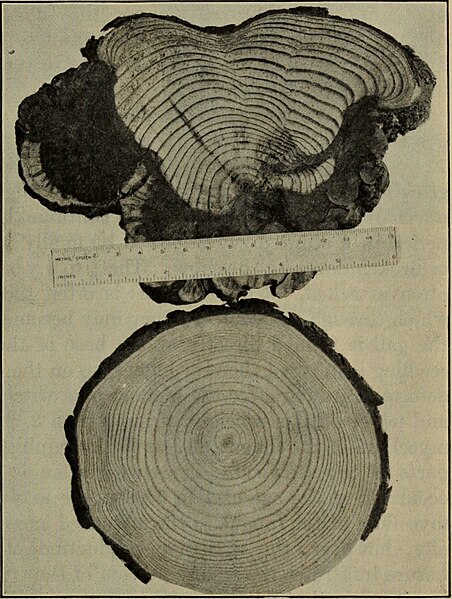File:Bulletins on forest pathology - from Bulletin U.S.D.A., Washington, D.C., 1913-1925 (1913) (20496007632).jpg

Original file (1,488 × 1,972 pixels, file size: 986 KB, MIME type: image/jpeg)
Captions
Captions
Summary edit
| DescriptionBulletins on forest pathology - from Bulletin U.S.D.A., Washington, D.C., 1913-1925 (1913) (20496007632).jpg |
English: "Cross sections of the main trunk of a jack pine heavily infected with Peridermium cerebrum" Title: (Bulletins on forest pathology : from Bulletin U.S.D.A., Washington, D.C., 1913-1925) |
| Date | |
| Source |
https://www.flickr.com/photos/internetarchivebookimages/20496007632/
|
| Author | Internet Archive Book Images |
| Permission (Reusing this file) |
At the time of upload, the image license was automatically confirmed using the Flickr API. For more information see Flickr API detail. |
| Flickr tags InfoField |
|
| Flickr posted date InfoField | 12 August 2015 |
Licensing edit
This image was taken from Flickr's The Commons. The uploading organization may have various reasons for determining that no known copyright restrictions exist, such as: No known copyright restrictionsNo restrictionshttps://www.flickr.com/commons/usage/false
More information can be found at https://flickr.com/commons/usage/. Please add additional copyright tags to this image if more specific information about copyright status can be determined. See Commons:Licensing for more information. |
| This image was originally posted to Flickr by Internet Archive Book Images at https://flickr.com/photos/126377022@N07/20496007632. It was reviewed on 16 October 2015 by FlickreviewR and was confirmed to be licensed under the terms of the No known copyright restrictions. |
16 October 2015
File history
Click on a date/time to view the file as it appeared at that time.
| Date/Time | Thumbnail | Dimensions | User | Comment | |
|---|---|---|---|---|---|
| current | 09:16, 16 October 2015 |  | 1,488 × 1,972 (986 KB) | Fæ (talk | contribs) | == {{int:filedesc}} == {{information |description={{en|1=<br> '''Title''': (Bulletins on forest pathology : from Bulletin U.S.D.A., Washington, D.C., 1913-1925)<br> '''Identifier''': bulletinsonfores00unit ([https://commons.wikimedia.org/w/index.php?ti... |
You cannot overwrite this file.
File usage on Commons
The following page uses this file:
File usage on other wikis
The following other wikis use this file:
- Usage on kn.wikipedia.org